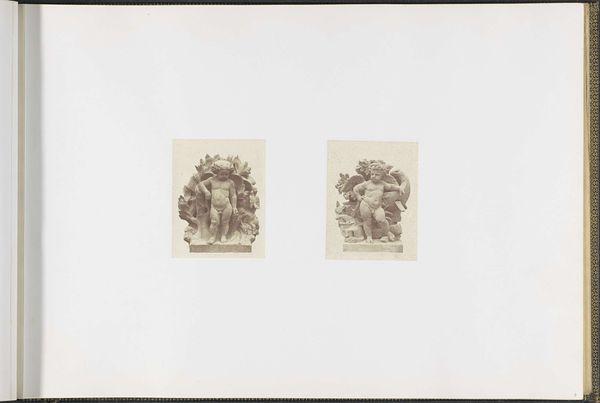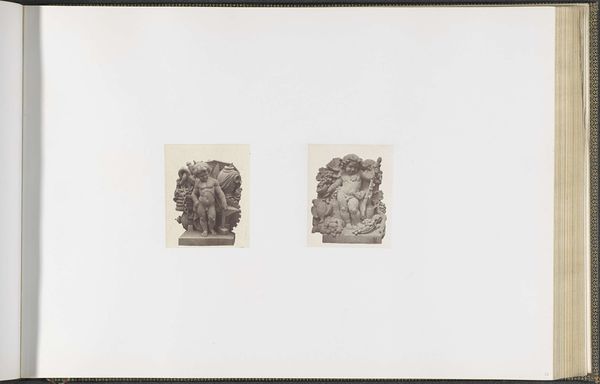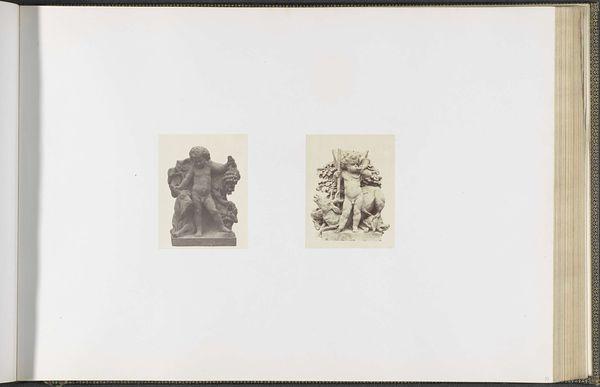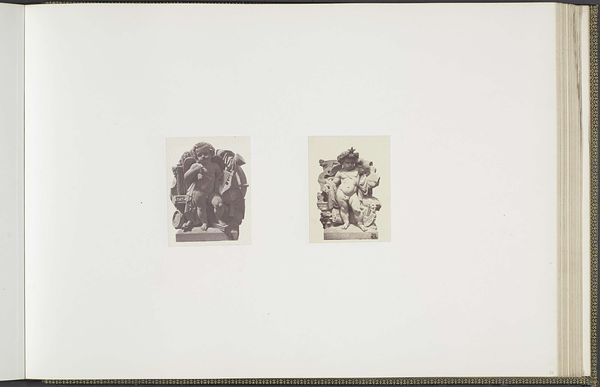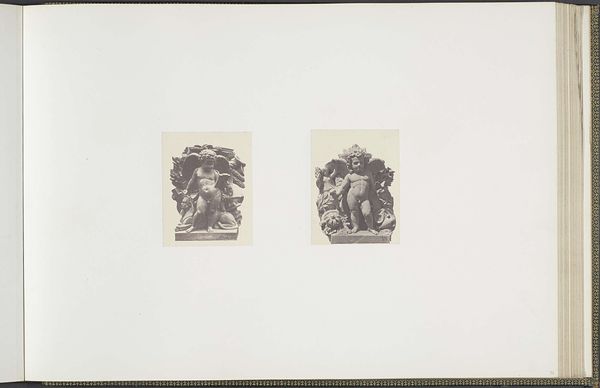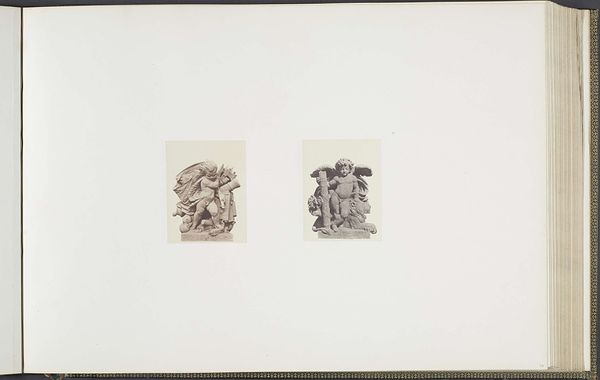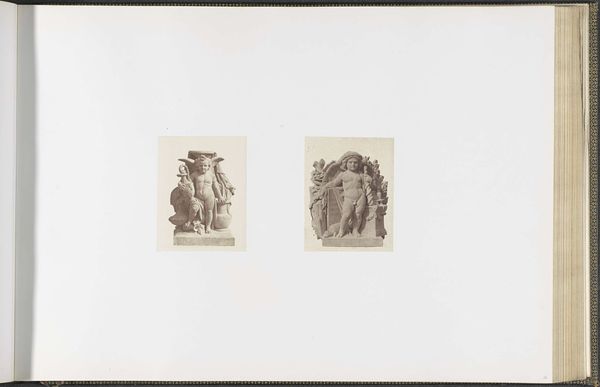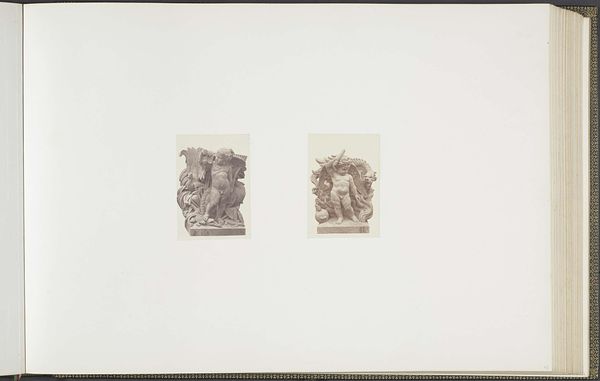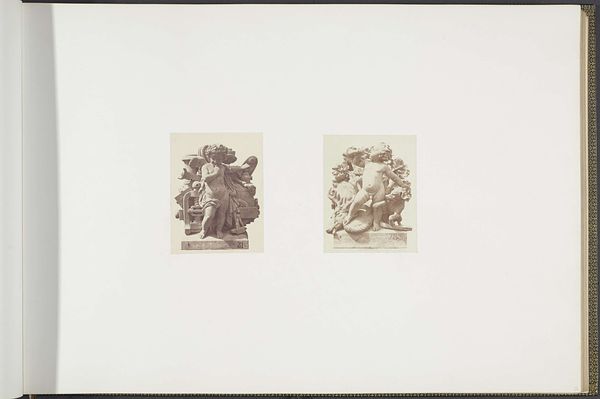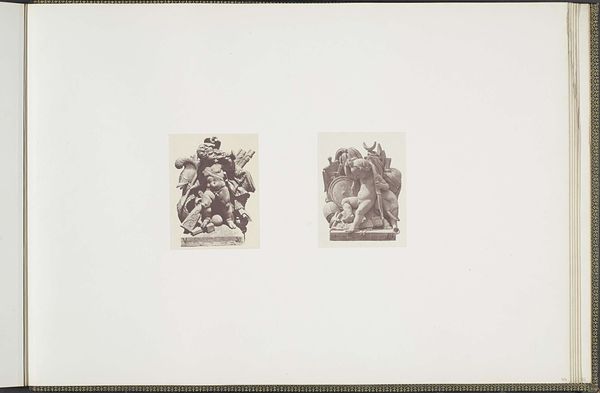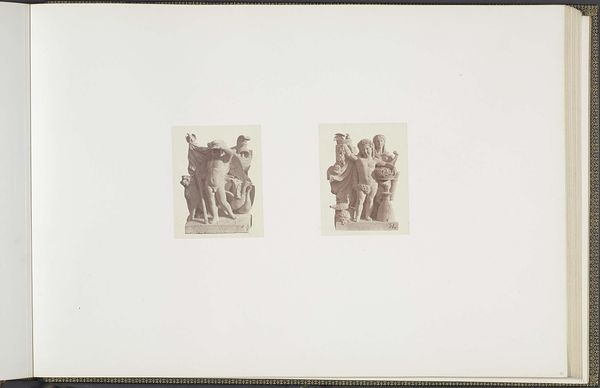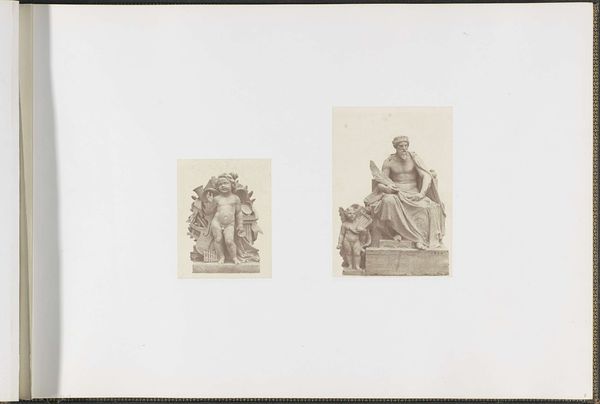
Gipsmodellen voor beeldhouwwerken op het Palais du Louvre: links "L'Histoire" door Théodore François Devaulx en rechts "L'Anatomie" door Emile Hébert c. 1855 - 1857
0:00
0:00
edouardbaldus
Rijksmuseum
print, photography, sculpture, gelatin-silver-print
#
portrait
#
neoclacissism
#
aged paper
#
toned paper
# print
#
photography
#
sculpture
#
gelatin-silver-print
#
academic-art
Dimensions: height 382 mm, width 560 mm
Copyright: Rijks Museum: Open Domain
This photograph by Edouard Baldus captures plaster models for sculptures intended for the Palais du Louvre. The sepia tones and the sharp detail made possible by the wet collodion process, allows us to study the texture and form of these works. Consider the role of plaster in the nineteenth century. These were not the finished sculptures, but rather the maquettes, the studies, for works ultimately intended to be realized in stone. The plaster allowed the artists Devaulx and Hébert to experiment, to work out their compositions at a smaller scale, before committing to the laborious and expensive process of stone carving. Photography played a crucial role in this process, allowing for the dissemination of these models, and serving as a crucial aid in the translation of plaster to stone. This image thus captures a transitional moment, a stage in the making, revealing the complex relationship between artistic vision, material possibility, and industrial production in the 19th century. It reminds us that even seemingly timeless stone sculptures are the result of a complex process.
Comments
No comments
Be the first to comment and join the conversation on the ultimate creative platform.
